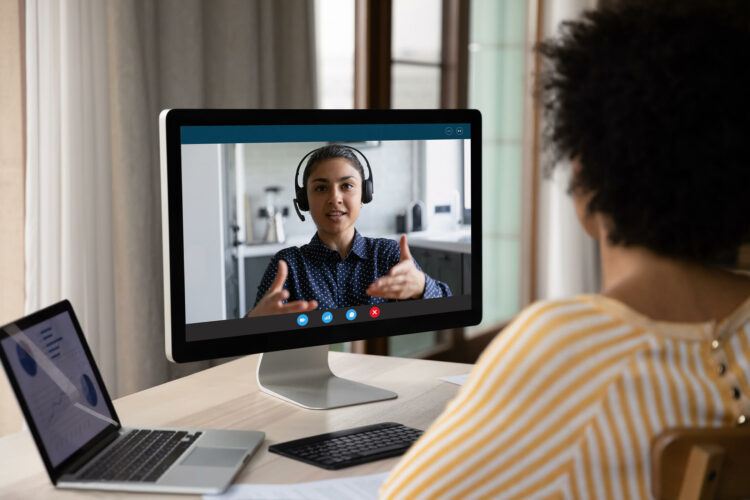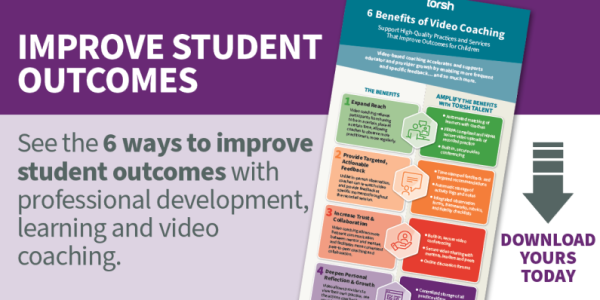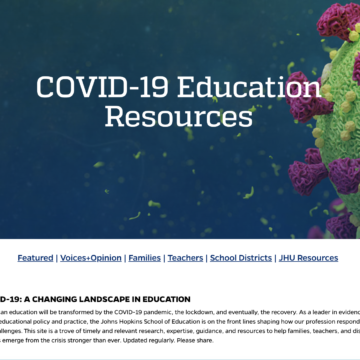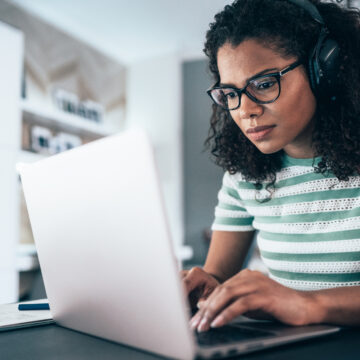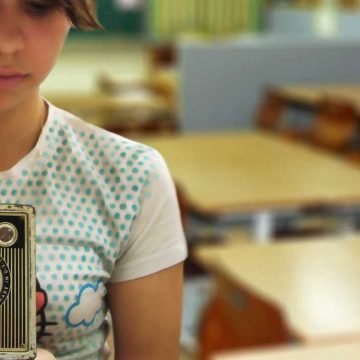When considering strategies and best practices for how to improve a school district, a powerful approach is instructional coaching. Coaching is a proven component of professional development that provides individualized, targeted, long-term, job-embedded support to help educators improve their practice—creating a culture of continuous learning and improvement.
The practice of coaching in schools is not new, but the methods employed, as well as the mediums in which coaching is delivered, have evolved over time. Technology and long-term analysis of practices that result in sustainable school improvement have both been driving factors in the evolution of instructional coaching.
Back in the 1980s, researchers Bruce Joyce and Beverly Showers conducted a study that looked at the effectiveness of different types of professional development for educators. Their research revealed that coaching is one of the best ways in which to nurture authentic professional growth, leading to more successful teaching practices. Specifically, they found that educators who received coaching had higher levels of implementation and retention of new teaching strategies compared to educators who received other forms of professional development, such as workshops or conferences.
A 2019 report from the New Teacher Center “confirms that instructional coaching is associated with improved student learning.” And according to research by Jim Knight, Ph.D., “instructional coaching is an effective method for improving teacher practice and student achievement.”
Instructional Coaching Strengthens Other Professional Development Approaches
Professional development takes a variety of forms, from in-school workshops led by a facilitator and online courses offered through universities or other institutions, to professional learning communities (PLCs). All of these formats provide valuable learning opportunities for educators. However, these PD methods alone often do not result in sustainable changes in school climate and student achievement. Some common reasons include:
- A one-size-fits-all approach may not be effective for the learning styles and needs of all educators.
- A focus on teaching content knowledge rather than pedagogical strategies. Understanding content is important, but educators need to translate that knowledge into their classroom practice.
- Lack of follow-up and ongoing support. Without this, educators may struggle to implement the strategies taught in workshops and trainings.
- Lack of consistency and frequency can make it challenging for educators to gain momentum and build their skills with a new strategy or practice.
- A primary focus on new or struggling educators. All educators can benefit from opportunities to learn new techniques, technologies, tools, and strategies to meet changing classroom and curricular needs, regardless of how long they’ve been teaching.
When paired with instructional coaching, the knowledge and strategies educators gain in workshops and courses is deepened and integrated into their practice. Instructional coaches help educators identify areas for improvement; share and demonstrate tactics that educators can try in their classrooms immediately; and provide ongoing support and feedback. Because coaching is personalized, it addresses each educator’s specific teaching practices and helps them to develop the pedagogical strategies needed to better serve their students.
Instructional coaches are collaborative partners in an educator’s professional development, and the relationship between coach and teacher can be powerful and transformative. “Coaching creates a relationship in which a client feels cared for and is therefore able to access and implement new knowledge,” writes Elena Aguilar, author of the book The Art of Coaching: Effective Strategies for School Transformation. “A coach can foster conditions in which deep reflection and learning can take place, where a teacher can take risks to change her practice, where powerful conversations can take place and where growth is recognized and celebrated.”
How Does Coaching Support Sustainable School and District Improvements?
Cultural Change
A report from the Annenberg Institute, Professional Development Strategies: Professional Learning Communities/Instructional Coaching, found that job-embedded professional learning—such as coaching—promotes positive cultural change. Instructional coaching builds trust between educators and coaches by creating a safe and supportive environment for educators to share their challenges, ask for help, and receive feedback. This trust can extend beyond the coaching relationship to create a more positive and supportive school culture overall. By emphasizing a growth mindset, coaching encourages all stakeholders to take risks, try new things, and view challenges as opportunities for growth.
Increased Instructional Competence
Instructional coaching focuses on improving the instructional effectiveness of educators which is critical to equitable student achievement. Coaching should be aligned with a district’s math, ELA, and other curricula with coaches helping educators improve their skills through demonstration, feedback, and practice.
Coaches can help educators to identify the needs of their students through data study and work together to develop strategies to meet those needs. This focus can help to create a shared sense of purpose and a greater commitment to student success. Coaching allows educators to apply their learning more deeply, frequently, and consistently than they might working alone.
Enhanced Collaboration Within an Organization
The Annenberg Institute report concludes that effective coaching encourages collaborative, reflective practice. An essential feature of coaching is that it leverages the relationships between coaches, principals, and educators to create ongoing conversations that lead to behavioral, pedagogical, and cultural change. Coaching creates opportunities for leaders and educators to work together to share resources, exchange ideas, and learn from each other. This collaboration can help to break down silos and promote a sense of shared responsibility for student learning.
What Types of Coaching Work Best to Improve a School District?
“For an instructional coaching program to be effective,” say Lucy Steiner and Julie Kowal of the Center for Comprehensive School Reform and Improvement, “school leaders need to play an active role in selecting trained coaches, developing a targeted coaching strategy, and evaluating whether coaches are having the desired impact on teaching and learning.” This principle applies to any educational organization, including charters.
Here are a few types of instructional coaching to consider. (For more in-depth information, see Exploring Various Coaching Models in Education.)
#1: Directive Coaching
In directive coaching, the coach takes a more authoritative and instructional role. The coach provides clear guidance, feedback, and direction to the educator, telling them what to do, how to do it, and when to do it. The coach is seen as an expert and is responsible for driving the coaching process. This approach can be helpful for educators who are new to a task or lack confidence in their abilities, as it can provide them with explicit instructions and guidance.
Directive coaching can be helpful in building a sound base of understanding surrounding a pedagogy, curriculum routine, or specific practice, but it is best used as a temporary solution. The ultimate goal is to empower the teacher to begin solving problems and making decisions on their own.
An example of directive coaching in practice might entail having the coach model how to teach CVC (consonant-vowel-consonant) words with very specific phonics strategies, then asking the teacher to go through the exact same steps in the classroom.
#2: Non-Directive Coaching
In non-directive coaching, the coach takes on a more supportive and facilitative role. The teacher takes the lead; the coach is there to help them use their own experience and knowledge to solve problems and build skills. The coach does not provide direct instruction or advice; instead, they ask open-ended questions, actively listen, and encourage the educator to find their own solutions. The coach supports the educator’s self-discovery and helps them explore their thoughts, feelings, and perspectives. This approach can be useful for educators who have some experience and are looking to improve their skills, as it can help them pinpoint their strengths and areas for growth.
A non-directive coach can be helpful in a situation where the teacher has a problem they need to solve. The coach might suggest ways to tackle the problem, including citing examples of how other educators have successfully mastered a similar challenge. An example of this might be one in which the teacher shares their frustrations about managing disruptive behavior in the classroom. The coach would listen with empathy, ask questions to reveal what might be triggering the problem, and invite the teacher to brainstorm approaches to better manage the situation.
#3: Collaborative Coaching
In collaborative coaching, the coach and teacher work together to set goals, develop action plans, and achieve outcomes. The coach and teacher have equal roles, and the coach provides guidance, feedback, and support as needed. They collaborate to explore various options, ideas, and perspectives, and jointly create a plan for moving forward. This approach can be helpful for educators who are experienced and are looking to improve their leadership or teamwork skills, as it can help them identify and overcome complex challenges.
In this model, the coach asks probing questions, actively listens, and helps the educator to focus on their goals. They don’t tell the educator what to do, but they do share their expertise and recommended strategies, which the educator can then evaluate and act upon. Together, coach and educator can look at whether or not the strategies that were applied met the hoped-for goal with fidelity, and what they can do to adjust their approach.
An example of this type of coaching might be one in which the coach and teacher together delve into the latest research about how best to help a classroom of multi-level English Learners increase their language proficiency. After the teacher applies the strategies they have devised, the two would confer to ask “Was our goal achieved?”
Conclusion
An effective coaching program can lead to the development of new skills, strategies, and approaches that are sustained over time, ultimately leading to improved student outcomes.
Additionally, coaching helps build a culture of continuous improvement within schools, where educators are encouraged to reflect on their practice, seek feedback, and collaborate with their colleagues. By fostering a culture of growth and learning, coaching can help ensure that sustainable school improvements are made in a holistic and collaborative manner.
TORSH Talent: Helping Districts, Charters, and Organizations Improve and Sustain Success for Students and Educators With Coaching
School districts, charters, and other organizations across the country rely on TORSH Talent to facilitate collaboration between coaches and educators through secure video sharing, time-stamped feedback, in-platform live video conferencing, professional learning communities, and an online resource library of your district’s resources and exemplars. See how these districts are using TORSH Talent to streamline their coaching programs and improve teacher and student outcomes.
